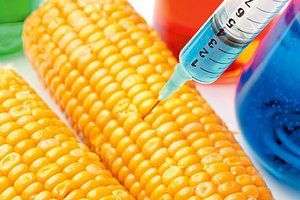When sports chiropractors first appeared at the Olympic Games in the 1980s, it was alongside individual athletes who had experienced the benefits of chiropractic care in their training and recovery processes at home. Fast forward to Paris 2024, where chiropractic care was available in the polyclinic for all athletes, and the attitude has now evolved to recognize that “every athlete deserves access to sports chiropractic."
Genetic Modification of Organisms for Human Consumption (Part 1)
Some topics in nutrition remind me of politics because the spin, distortion and exaggeration make it difficult to determine the facts. I do not care what the truth is as long as I know it. Genetically modified organisms (GMO) is one of those subjects that ignites emotions in a manner I believe is out of proportion for the issue.
In a recent lecture, I answered an off-topic question about how I felt about GMO foods. I stated that plant domestication was an advancement for man in the same league as controlling fire was; and that domestication was genetic modification. Additionally, depending on the plant, seed selection, grafts, cuttings and fermentation are just a few of the numerous types of artificial manipulation humans did to increase desirable traits and/or reduce undesirable traits.
The Good, the Bad, and the Ugly of Genetic Modification
Hybrids that would not occur naturally were developed for more uniform and predictable yields. Sometimes a genetic mutation (such as a navel orange) with defects Mother Nature would never allow to develop were embraced and farmed.
Early plant modification was not specific compared to what is done today, but it was much more precise than what would have occurred naturally. In fact, for hundreds of years the main crops that feed mankind have become more and more unnatural.

Livestock has undergone the same process. We've all learned what has happened to the omega-3 fats in beef because of the preference for a more tender product. By the time GMO crops began to appear in the 1990s, most of the plants and animals we consume were already so modified they could never survive without considerable assistance.
When our ancestors made something bigger, sweeter or more uniform, those desired characteristics were accompanied by other changes – some positive, some negative and some (probably many) unrecognized. To achieve those changes, hundreds, if not thousands, of genes were altered. The result was better-looking and/or better-tasting produce and livestock that were often more susceptible to a number of problems the species never had before man began to alter it.
This does not mean what is done today – injecting DNA into a cell culture or using a bacteria that serves as a carrier to deliver DNA – is risk free, but understanding what had been done in the past makes it easier to evaluate what (and in some cases why) genetic modification has continued.
Putting GMO in Appropriate Context
One of the biggest problems with the GMO debate is context. The DC who asked me about GMO was not happy with my answer and used the example of GMO corn. My reply: "There is a can of soda and a bag of cookies on your desk, and you're worried about corn?"
Even more disturbing is the destruction of GMO produce because of safety concerns. In May 2013, GMO grapes were destroyed in France. Sugar beets in Oregon were destroyed in June 2013. GMO corn has been destroyed in Spain and Hungary. In August 2013, GMO rice crops in the Philippines were destroyed because the rice was potentially unsafe.
Let's assume it is unsafe (even though in that case, the rice had been altered to contain higher levels of beta carotene to reduce the nation's large vitamin A deficiency). How's this for a ridiculous question: Would you feed it to people who would otherwise die of starvation in 10 days, knowing their risk of death would increase in 10 years? Or how about: "Are the GMO grape, rice, corn and sugar-beet examples more dangerous than the tobacco also grown in each of the five nations mentioned?
In part 2 of this article, we will address specific GMO pros, cons, risks, myths, facts, and how a defeat at the ballot box has turned out to be a win for those concerned about GMO – including myself.



